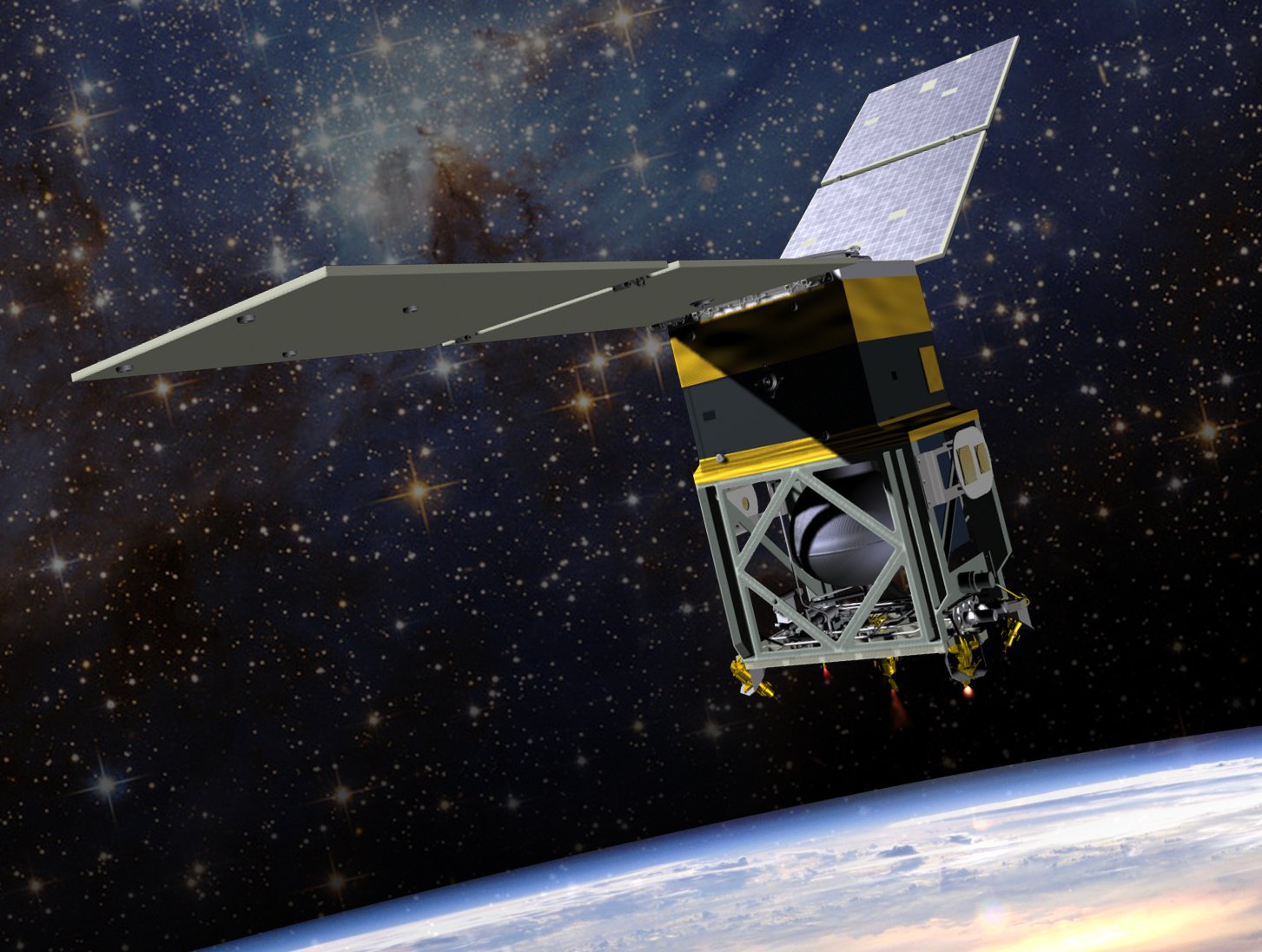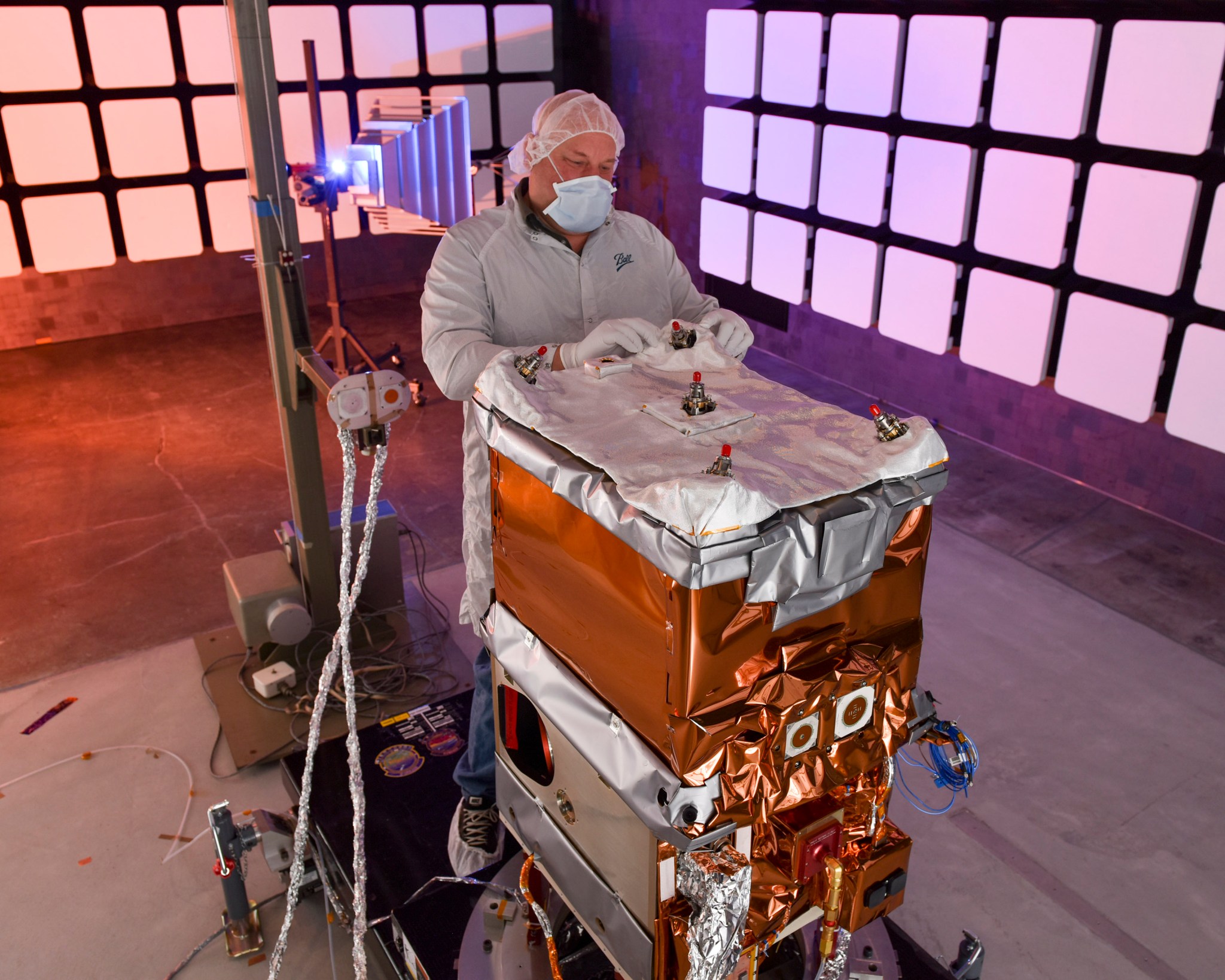Like all rocket engines, the small thrusters that a spacecraft or satellite fires to maintain or change positions need fuel. Currently, many use hydrazine — a toxic and corrosive fuel that requires special handling and equipment.
NASA’s Green Propellant Infusion Mission (GPIM) recently took another major step toward demonstrating the capabilities of a new propellant that is safer to handle on the ground and more efficient for thrusters in space. The GPIM spacecraft has passed a major flight readiness milestone marking the successful completion of functional and environmental testing of its systems and software, and is on track for launch in early 2018.
“We are increasingly reliant on satellites for communications, for monitoring weather and conditions on Earth and for exploration of the universe,” said Steve Jurczyk, associate administrator of NASA’s Space Technology Mission Directorate. “It’s important that we develop technology that increases protections for launch personnel and the environment, and that has the potential to reduce costs.”
GPIM will demonstrate the practical capabilities of a hydroxyl ammonium nitrate based fuel/oxidizer propellant blend, known as AF-M315E, developed by the U.S. Air Force Research Laboratory at Edwards Air Force Base in California. The new propellant is 45-percent denser than hydrazine, meaning more of it can be stored in containers of the same volume. Coupled with a greater Isp than hydrazine, this means there is approximately a 50-percent increase in spacecraft maneuvering capability for a given volume. AFM-315E also has a lower freezing point than hydrazine, requiring less spacecraft power to maintain its temperature.
AF-M315E, less toxic than traditional chemical fuels like hydrazine, requires fewer handling restrictions and less special equipment. That could shorten launch processing times, resulting in lowered costs.
“There are always going to be situations in which it makes sense to use hydrazine fuel,” said Chris McLean, principal investigator for GPIM and staff consultant at Ball Aerospace and Technologies Corp. in Boulder, Colorado, prime contractor for the mission. “But after GPIM, when we’re planning missions where this new green propellant has the potential for significant benefits, we’ll be able to say, ‘This has been demonstrated on orbit. Let’s take advantage of these improvements for our mission.’”
The GPIM propulsion subsystem and thrusters were developed byAerojet Rocketdyne in Redmond, Washington, and are the primary payload on the mission’s spacecraft — a Ball Configurable Platform 100 small satellite. After launch, the five thrusters will fire in different operations to test engine performance and reliability using the “green” fuel. Planned on-orbit maneuvers also include attitude control demonstrations, spacecraft pointing and hold, inclination change and orbit lowering.
“GPIM is the result of excellent teamwork between NASA, Ball Aerospace, the Air Force and Aerojet Rocketdyne to develop an American-made green propellant propulsion system that can be used for multiple applications,” said Eileen Drake, CEO and president of Aerojet Rocketdyne. “The spacecraft delivery marks the success of more than 10 years of research and development, and we are honored to have contributed toward engine and system technology that has resulted in a highly capable system.”
“The GPIM spacecraft will go into storage for a few months and the team will focus on the propellant’s handling and loading campaign,” said McLean.
Three Department of Defense experimental payloads also will fly aboard the GPIM spacecraft, set for launch in early 2018 from Cape Canaveral, Florida, aboard a SpaceX Falcon Heavy in partnership with the Army Space and Missile Defense Command. The launch is part of the Air Force’s Space Test Program 2 (STP-2) mission. STP-2 also is scheduled to carry another NASA Technology Demonstration Missions payload, the Deep Space Atomic Clock.
Additional GPIM team members include the Air Force Space and Missile Systems Center at Kirtland Air Force Base, New Mexico; NASA’s Glenn Research Center in Cleveland; Goddard Space Flight Center in Greenbelt, Maryland and Kennedy Space Center in Florida.
GPIM is managed by the Technology Demonstration Missions program office at NASA’s Marshall Space Flight Center in Huntsville, Alabama, and funded by NASA’s Space Technology Mission Directorate.
For more information about NASA’s Green Propellant Infusion Mission, visit:






























